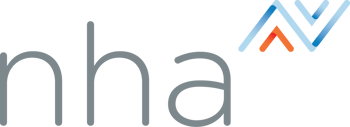Today’s medical assistant (CCMA) is challenged with an onslaught of information and more regularly challenged to solve increasingly complex issues than ever before. For some time now, researchers and educators have emphasized the need to provide 21st century instruction that aligns with these modern demands as well as changing student expectations.
Does Your Healthcare Education Content Rise to the Challenge?
Traditional learning methods alone fall short when it comes to equipping medical assistant students with the skills they need to excel in a fast-paced healthcare environment. What’s more, given the worker shortage impacting the entire industry, MAs are being called upon more frequently to assume new responsibilities. Taking note of the changing role of the medical assistant, keen educators will develop learning programs that empower students to succeed now and in the future.
For maximum knowledge retention and skills application, the information you share—and how you share it—with your students should be tailored to the professional role they will step into and their preferred way of learning. Research suggests these strategies may be most effective in helping students succeed…
- Teach with Right-Sized Content
In an industry where no two days ever play out the same, more knowledge is an asset. Generally speaking, more knowledgeable individuals are better prepared for unique situations. However, just because a piece of content is shared in a classroom, does not mean that information will be retained—or that it even should be.
In the case of modern instruction, less is more. Although it can be tempting to go in-depth in every instance or share related information on a topic, trying to communicate too much content can result in cognitive overload. More than possibly causing a headache, cognitive overload hinders a student’s ability to process and retain important information—or any information at all.
By focusing on right-sized content and disregarding superfluous facts, student engagement and outcomes are likely to improve. Rather than extensively lecturing on a topic, provide your students a sound foundation of need-to-know information along with the practical tools to apply what they have learned — and what they will learn — to future situations. In doing so, you will equip them with the skills to grow throughout their career, acquiring only the most useful knowledge as they manage ever-changing situations.
- Mix Up Instructional Methods
Speaking of applying lessons learned to new situations…reading is a passive experience. Its lack of practical engagement is problematic for knowledge retention. Instead of relying heavily on a textbook or other written content, try introducing your students to a variety of instructional methods, including:
- Simulations
- Interactive Role-Play
- Videos
- Hands-On Practice Activities
- Skills Drills
- Case Studies
- Internship and Externship Opportunities
- And More…
It is impossible to read about every exact scenario one will encounter as a medical assistant and memorize a list of steps to resolve the issue. In health care, every patient is different. The most skilled medical providers do not need to know — or even presume to know—what they will be faced with each day. Instead, they focus on and fine-tune their ability to act on the new, and sometimes limited, information at hand. And they know, the best way to do this is through practice.
A more dynamic, integrated and holistic learning approach provides invaluable experience, helping your students unlock new ways of thinking and encouraging problem-solving abilities. Meaningful, hands-on sessions like those listed above actively engage students in a rich and diverse application of skills to strengthen their conceptual understanding of a situation, instilling confidence to manage and overcome new challenges.
- Healthcare Education and Learning in Real Time
The future of teaching is poised to include more instructor autonomy and easier student assessment and intervention on a case-by-case basis. Digital platforms are making this easier to achieve. By capturing real-time insights into student performance, instructors realize profound benefits.
With an instantaneous view of class performance on an assessment, educators can understand what methods or tools seem to be working and which warrant evaluation and even replacement. Furthermore, virtual tools can be harnessed to easily identify individual needs and remediate weaknesses before they progress too far. This kind of active oversight, regular assessment and prompt instructor feedback have been shown to improve student success.When thoughtfully implemented, digital learning platforms can nurture positive instructor-student relationships, support enriched and varied learning strategies, and encourage student accountability, planning and time management.
NHA Provides Learning Resources to Meet 21st Century
In an increasingly fast-paced world, today’s students are presented new information at an astounding rate, both in and out of the classroom. More mentally taxed than ever before, learners must be empowered with the right information and skills to succeed in unexpected circumstances. Although there are a number of ways to achieve this, generally, you can boil it down to a few basic principles:
- Do not overload your students with information. Instead, present the most salient points and equip them with the skills they need to build on that knowledge and apply what they’ve learned to real-life scenarios.
- Practice makes perfect. Give your students the opportunity to apply what they learn through simulated experiences and other interactive models. In doing so, they’ll strengthen new learning paths and become more skilled at creative problem solving.
- Use technology to your advantage. Today’s students have grown up with technology at their fingertips. For them, it’s intuitive, and in most cases, their preferred form of instruction. By engaging your students using a medium they enjoy, they are more likely to interact with class material, and as an instructor, you can more easily assess and support them using real-time insights.
Learn about NHA tools and resources to modernize your medical assistant education program.




